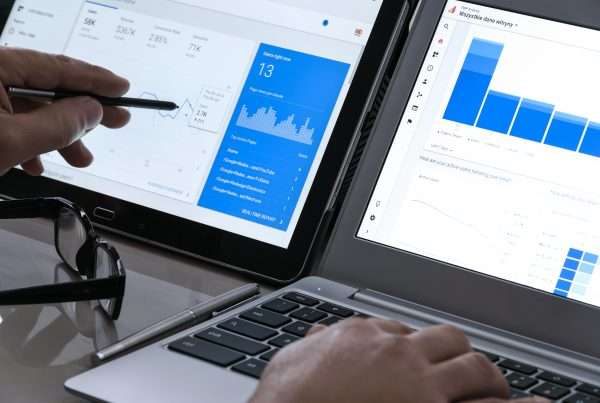Budgeting is a tedious but necessary component of running ROI-positive advertising campaigns. The old adage “You’ve got to spend money to make money” is especially true in the world of advertising. But you don’t want to blast through your budget in just a few days, or underutilize your budget out of fear of going over.
Overspending can destroy your ROI, but underspending can limit your reach and results. Savvy advertisers have to learn how to balance their PPC budget for a happy medium of profitability. Instead of blitzing through your budget in a blaze of glory, set parameters to control what you’re spending.
Your ad platform, keyword choices, ad creative, device settings, and campaigns all have an impact on your budget. Make the most of your precious advertising resources with these 5 PPC budgeting best practices and 3 tools to help you stay profitable.
5 PPC Budget Best Practices
Your tools are only as good as the ideas and strategies behind them. Before you dive headfirst into budgeting tools, it’s important to understand budgeting best practices first.
1. Look at your competitors
If you aren’t sure what a reasonable PPC budget would be, see if any of your competitors are doing PPC. How much do they allocate per click? Per campaign? Per month?
You can use tools like SpyFu to check out your competitors’ historic PPC data, including their target keywords. This alone will give you a budgeting ballpark. If you need to back up your budgeting needs for accounting, it has a higher likelihood of approval if you have competitor data in hand.
2. Focus on lead value
The purpose of PPC advertising is to get more business. When quantifying your campaign budget, think in terms of qualified leads. How many leads do you need to bring in to reach your business goals? Use this data to set your budget.
Let’s say you want to bring in 100 new clients in 2020. Based on historical data from your CRM, you know that your average close rate is 15%. Statistically, that means you should shoot for 667 leads to get 100 clients. If you look at your PPC data and see that it costs you $15 to get one lead, that means you need about $10,000 a month to reach 667 leads, or $330 a day.
Boom: you’ve figured out a PPC budget designed for real-world leads and optimized spend.
3. Prioritize low-funnel keywords
If you decide to set a $330 daily budget, you shouldn’t spend that budget evenly across every campaign. The best PPC budgeting takes into account the relative value of every audience, ad, or campaign.
In other words, don’t give the same spending power to every keyword on your list. You need to get the most results possible with your budget. Instead of treating everything equally, focus on low-funnel keywords in for buyers in the Consideration or Decision stages. These leads are more valuable to you than an Awareness stage customer who just isn’t ready to buy.
Use branded terms, offer comparisons, include demos or coupons, and persuade these leads to come to purchase. You’ll spend more on high-intent keywords, but they’ll net you more high-quality leads than high-funnel Awareness keywords.
4. Spend all of your budget
You might think it looks good to come in under budget, but advertisers need to spend as much of their budget as possible. Your company assigned that budget for a reason; the money is on the table, so use it!
If you’re underspending, use those extra dollars to extend the life of your campaigns. Consider a cart abandonment, call extension, or retargeting campaign to use up your ad spend in a meaningful, ROI-positive way.
It’s also worth taking a second look at your campaign settings. Make sure you aren’t being too restrictive with your targeting in the name of saving money. You still want your ads to get enough impressions.
5. Spend more where it matters
What are your goals? If you want to get more impressions, you would focus your budget dollars on a high-level, awareness-driven campaign. But if you want conversions and purchases, you would focus on intent-heavy Amazon Ads.
Every business is different. But what’s important is that you know where to spend your dollars wisely. Consider these factors to make every ad dollar go further:
- Adjust with the seasons: When are people buying your product? If you sell Christmas sweaters, for example, 90% of your earnings happen in Q4. Prioritize your budget according to these buying cycles to make the most of your ad spend at the right time.
- Successful products: Which products are your top-sellers? Instead of pushing your low-performing products with PPC, boost your most popular items first. These will get you more quick wins and generate ROI the quickest.
- Retention: Create a retention campaign to keep customers around. After all, it’s 7X cheaper to advertise to existing customers.

Got a PPC Budget SOS? Our 3 Favorite PPC Budgeting Tools
Now that you’ve got your strategy nailed down, check out our favorite PPC budgeting tools to make your life easier.
1. Optmyzr
Optmyzr’s Spend Projection tool is perfect for predicting ad spend. If it’s the end of a quarter and you need help predicting your ad costs, this tool will get you there.
2. Keyword Planner
Keyword Planner is a free tool by Google for Google Ads advertisers. It can help you bid competitive CPCs and check the historical performance of your keywords.
3. Pear Analytics
Pear Analytics has a free tool that will help you determine a monthly and daily PPC budget. You can only enter 10 keywords at a time, so it’s better for small ad groups.
The Bottom Line
PPC budgets are relative. There’s no black and white answer that will be right for every advertiser. Look at your goals and historical data to determine the right budget for your campaign. Use these 5 best practices and 3 tools to maintain more control over your budget, boosting profitability and simplifying the budget process.
Got a case of budget overwhelm? No worries. Chat with Logical Media Group. Our PPC pros can hop on a free brainstorming call to plan your next PPC campaign.








